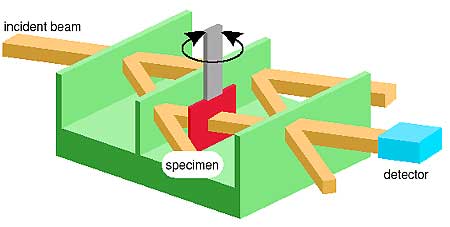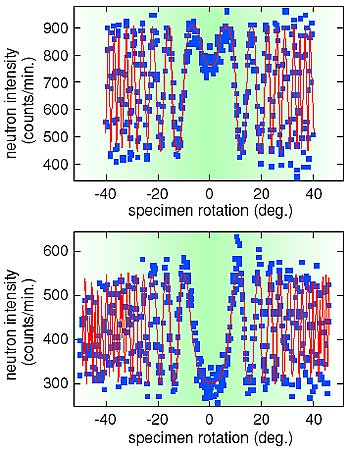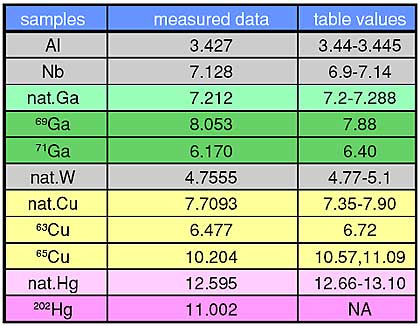| It is well known that neutron scattering is one of the most powerful tools in physics research. Furthermore, the fundamental quantity "scattering length" is a very important parameter describing the interaction between neutrons and atoms in a given material. We have measured scattering lengths on several elements and isotopes, using the neutron interferometer at the dedicated apparatus PNO in JRR-3M. With this method we can easily obtain data with high accuracy. A schematic diagram of the neutron interferometer experiment is shown in Fig. 4-11. As shown in the figure, the principal portions of the neutron flux, after being separated at the 1st plate and reflected at the 2nd plate, come together and interfere at the 3rd plate. The sample, which is placed in one of the separated paths, creates a phase difference with respect to the other path. When we turn the sample step by step, the effective sample thickness changes, and the resulting phase difference causes a systematic change in the measured beam intensity (Fig. 4-12). Analyzing such an intensity curve, we can easily obtain the value of the scattering length. So far, we have obtained values for the scattering lengths of several elements and selected isotopes. Among them, we have measured and obtained data on the isotope 202Hg of mercury for the first time ever. This isotope is regarded as a target material for the next generation of neutron sources. In addition, for the isotopes 69Ga, 71Ga, 63Cu, 65Cu, and for natural abundance elements Al, Nb, Cu, Hg, and W, we have obtained higher accuracy data than was previously available (Tab. 4-1). |


